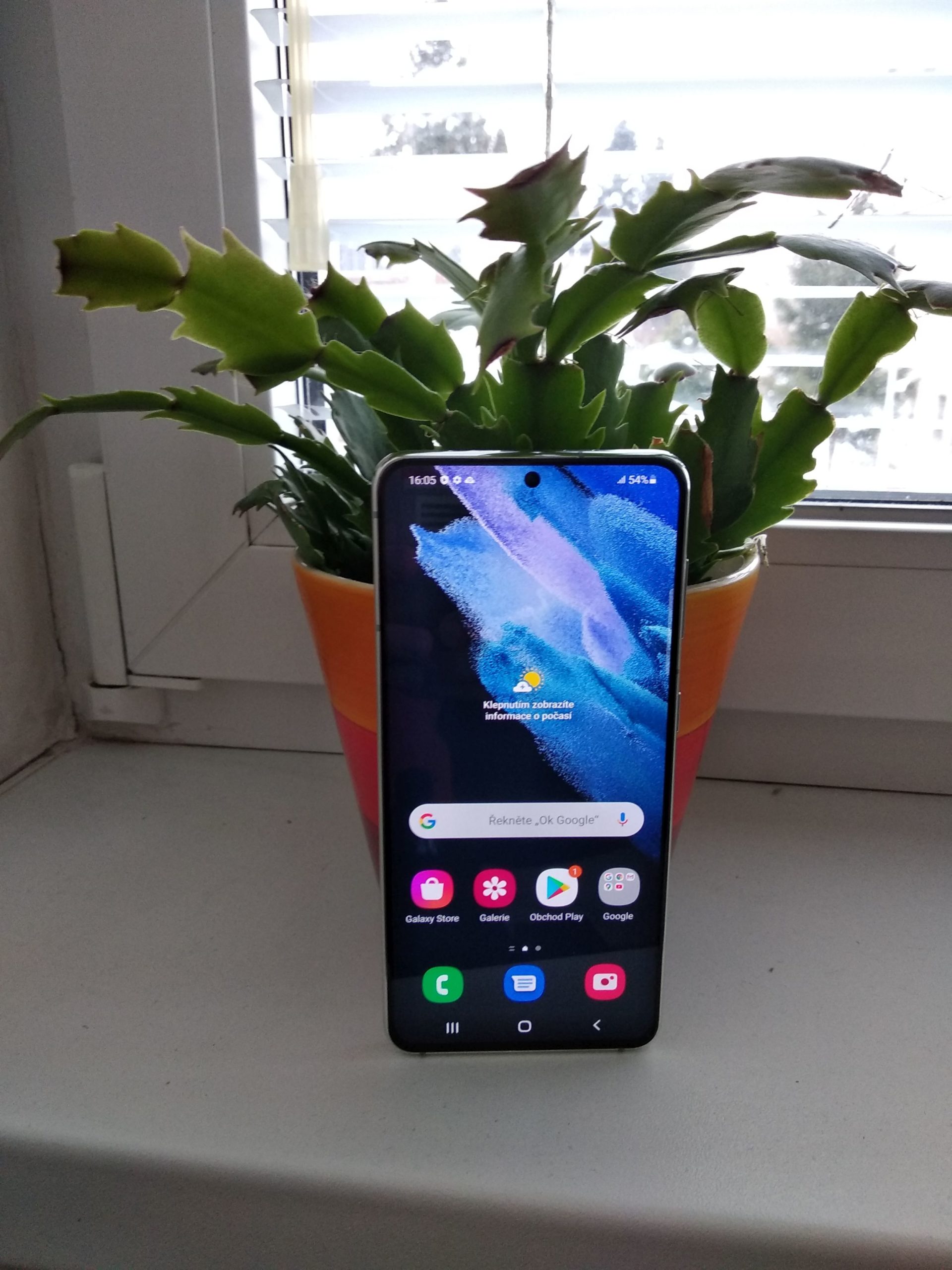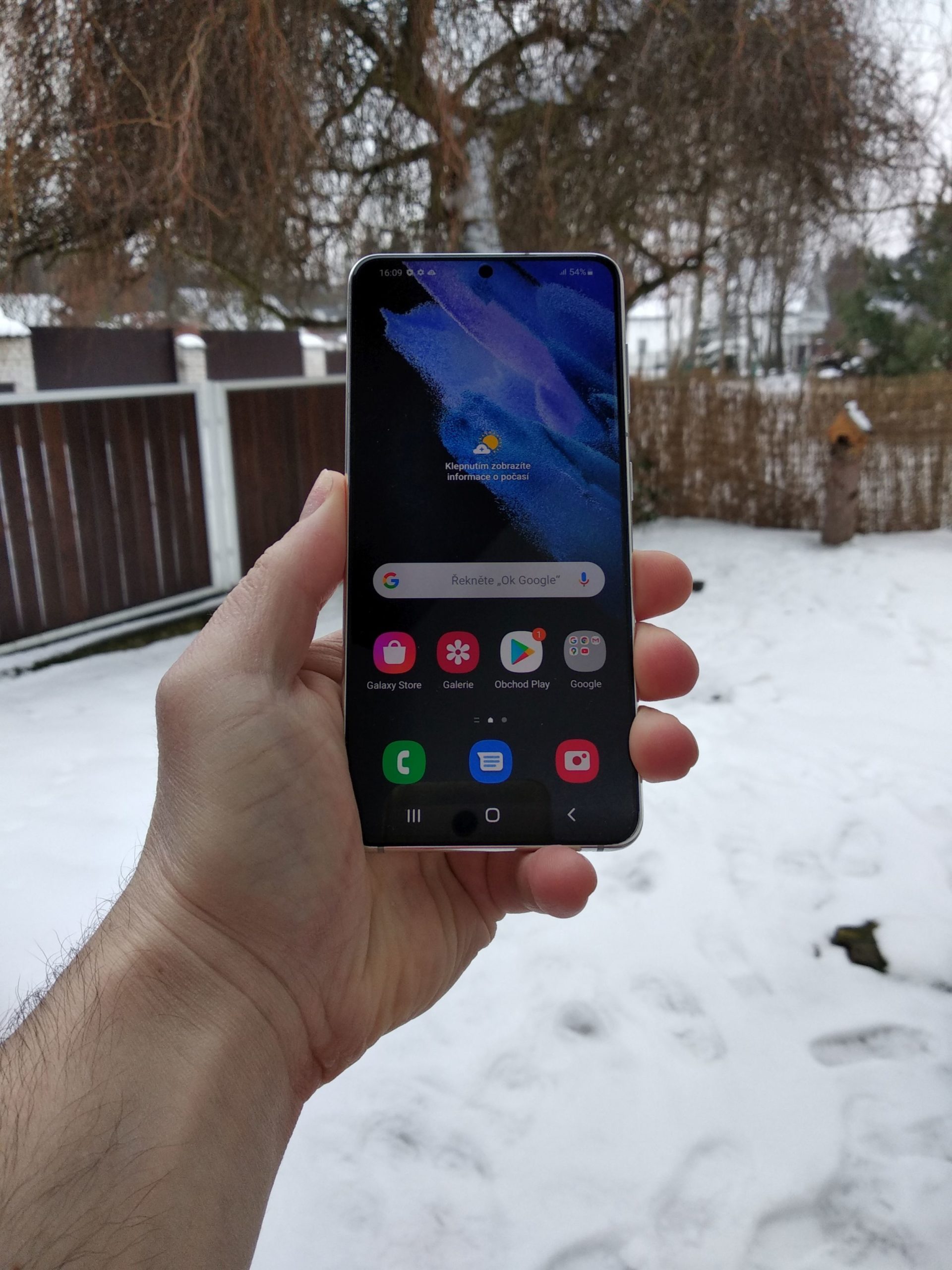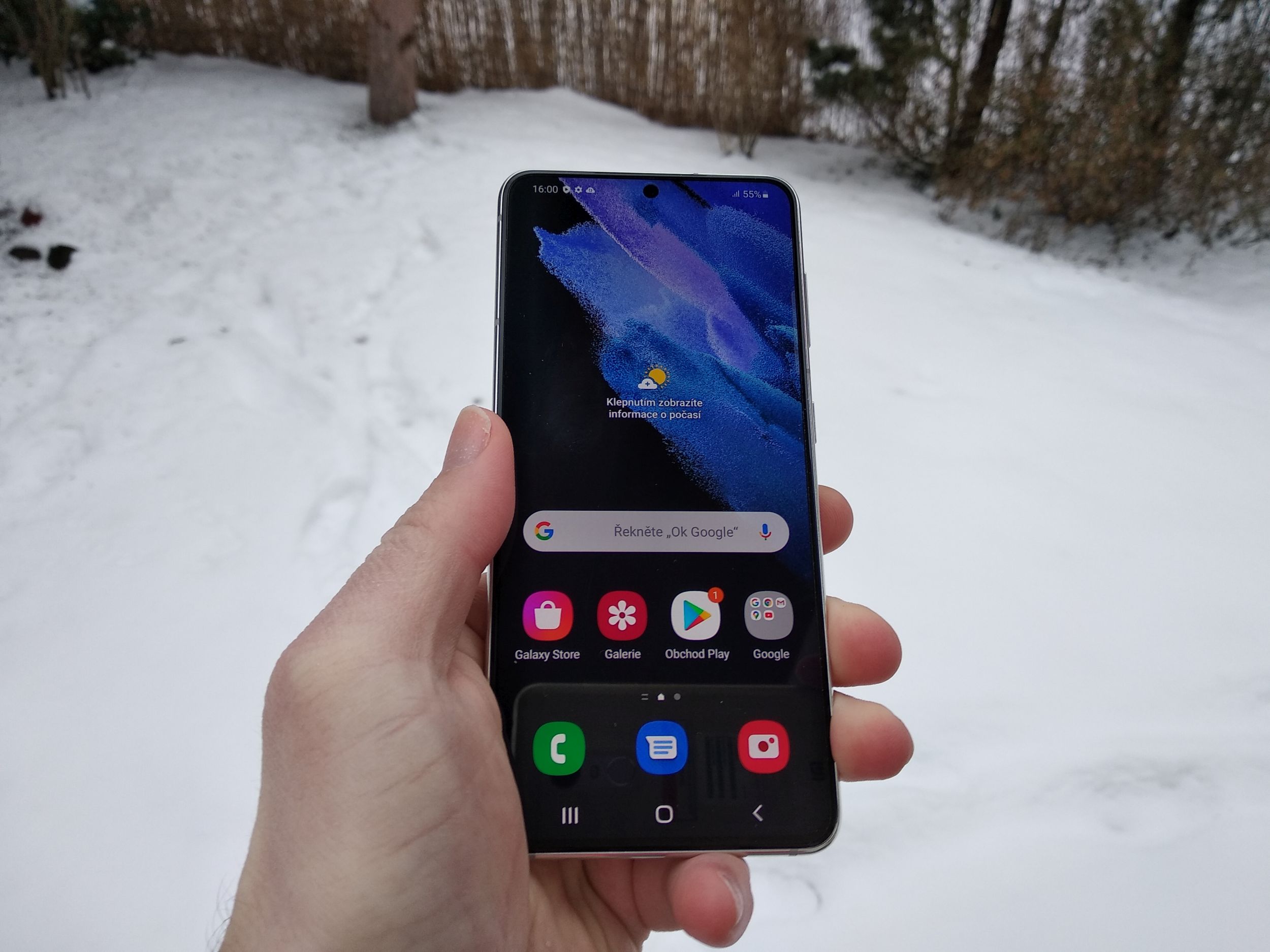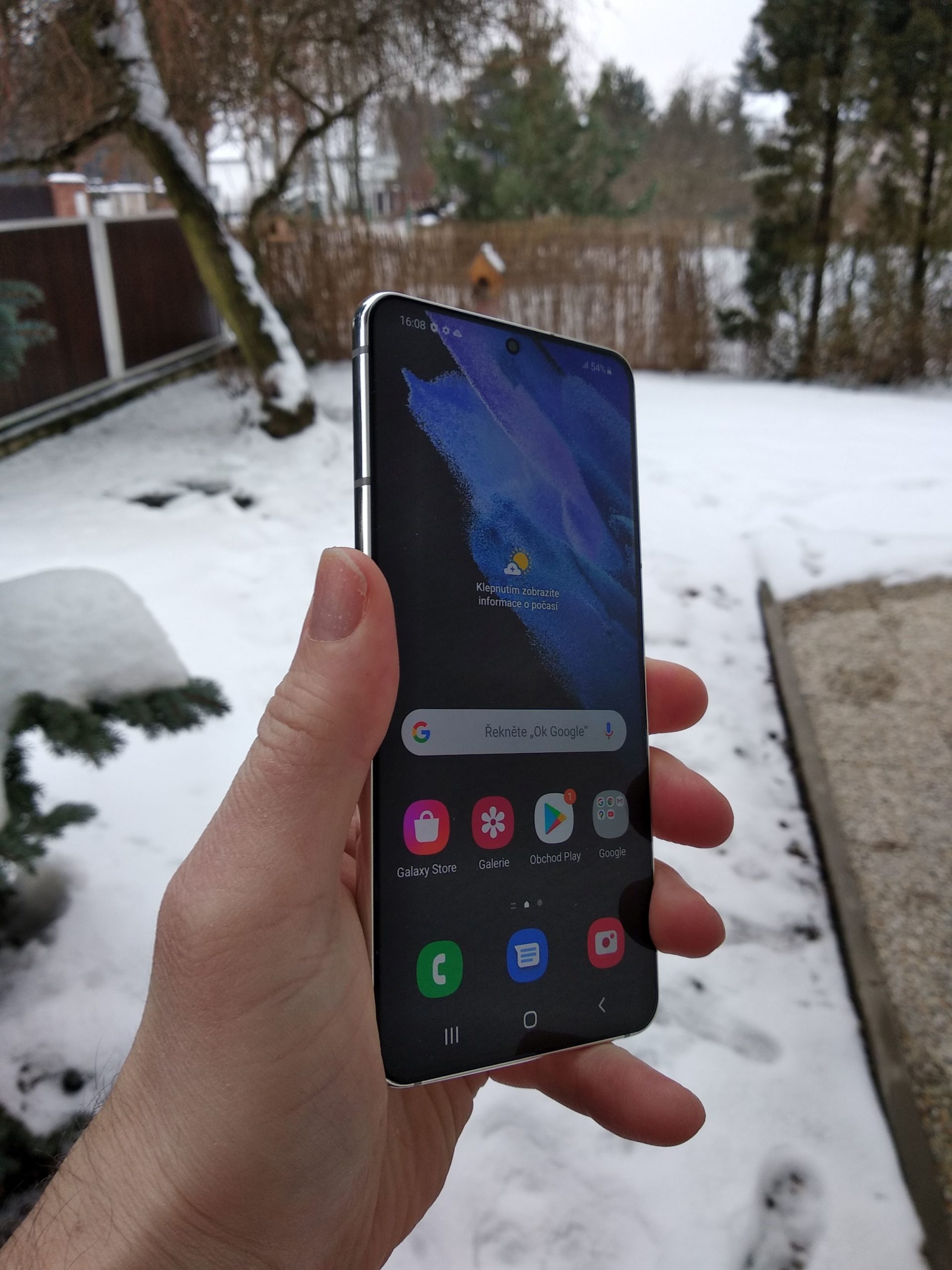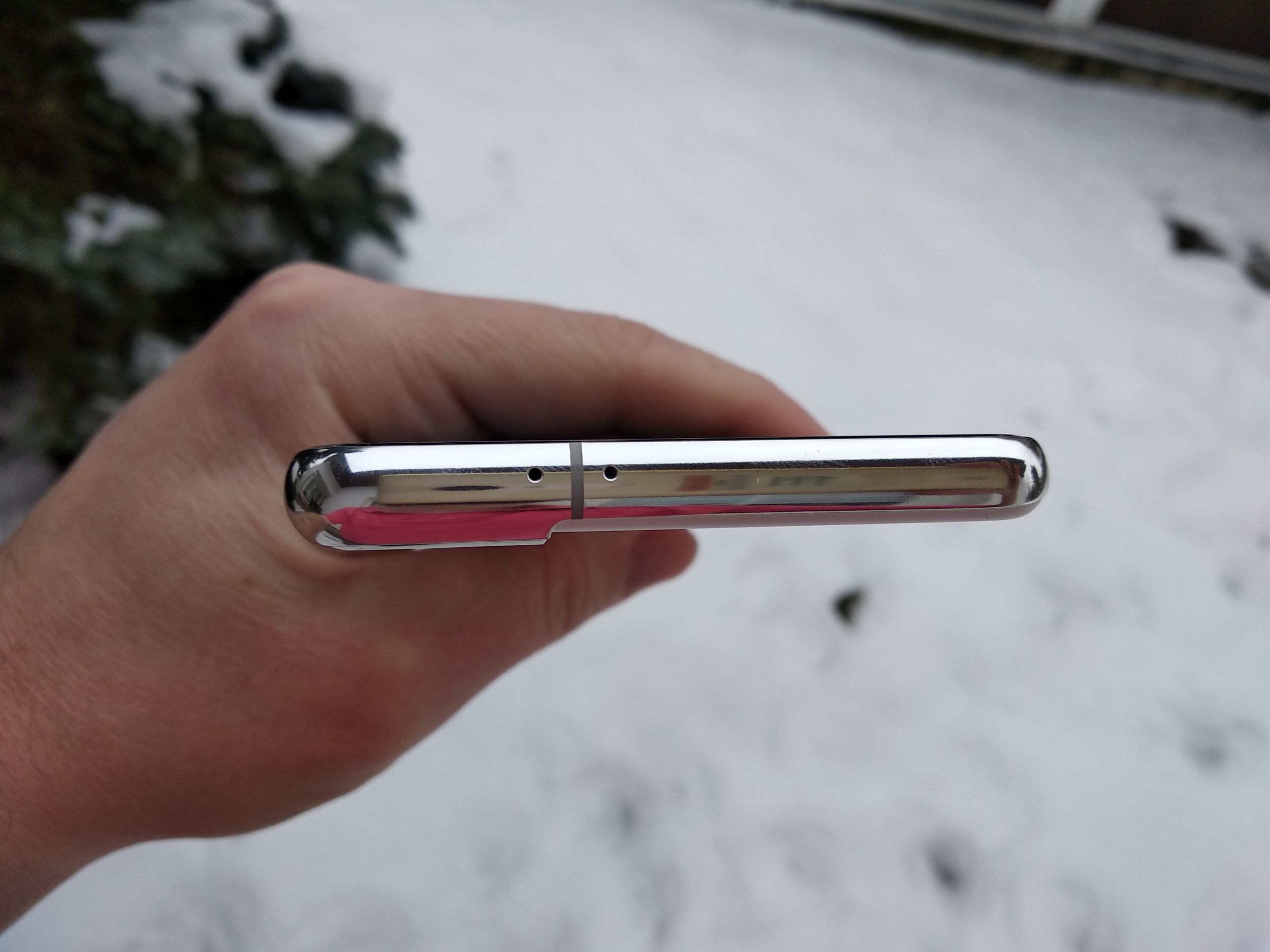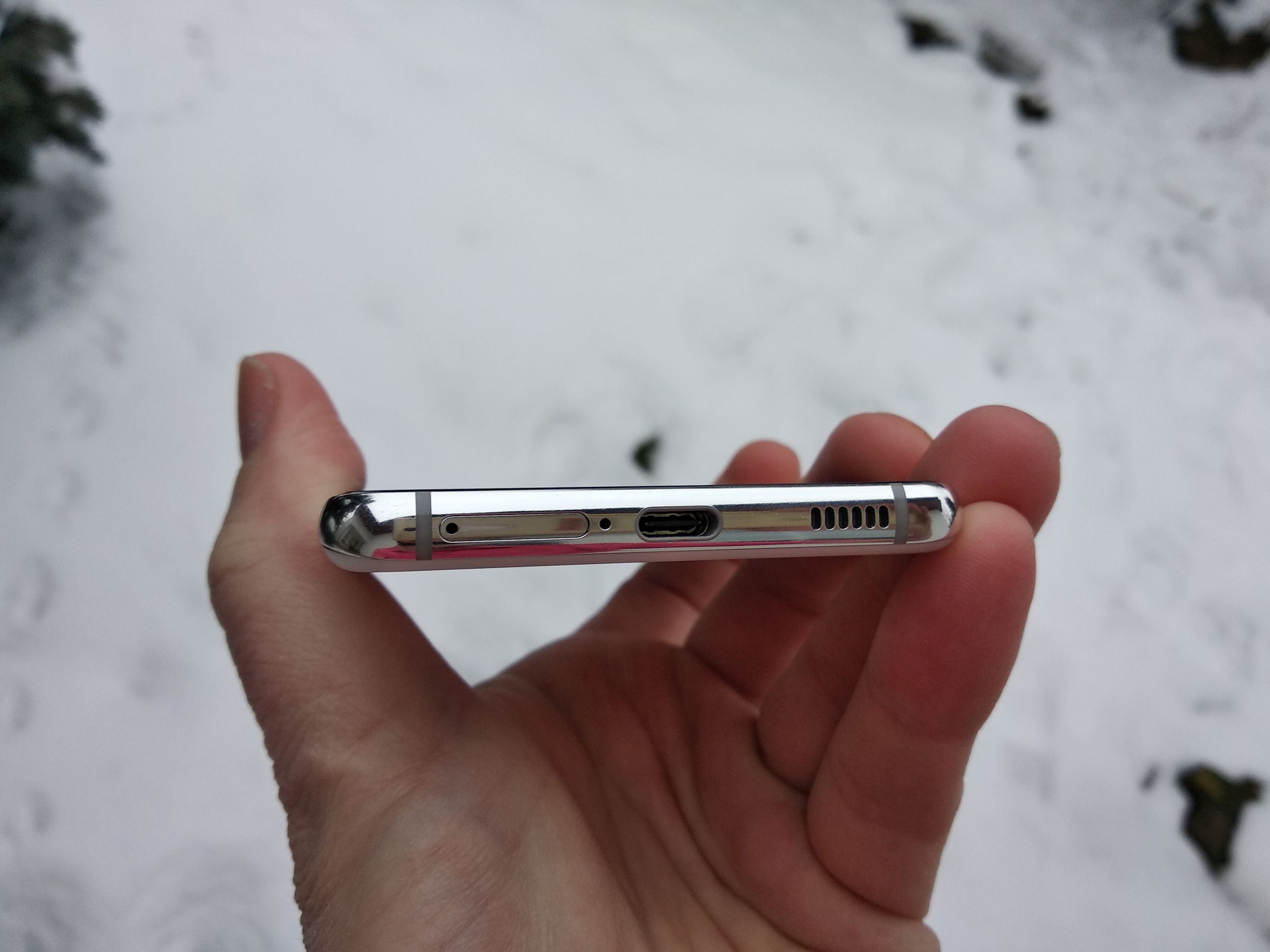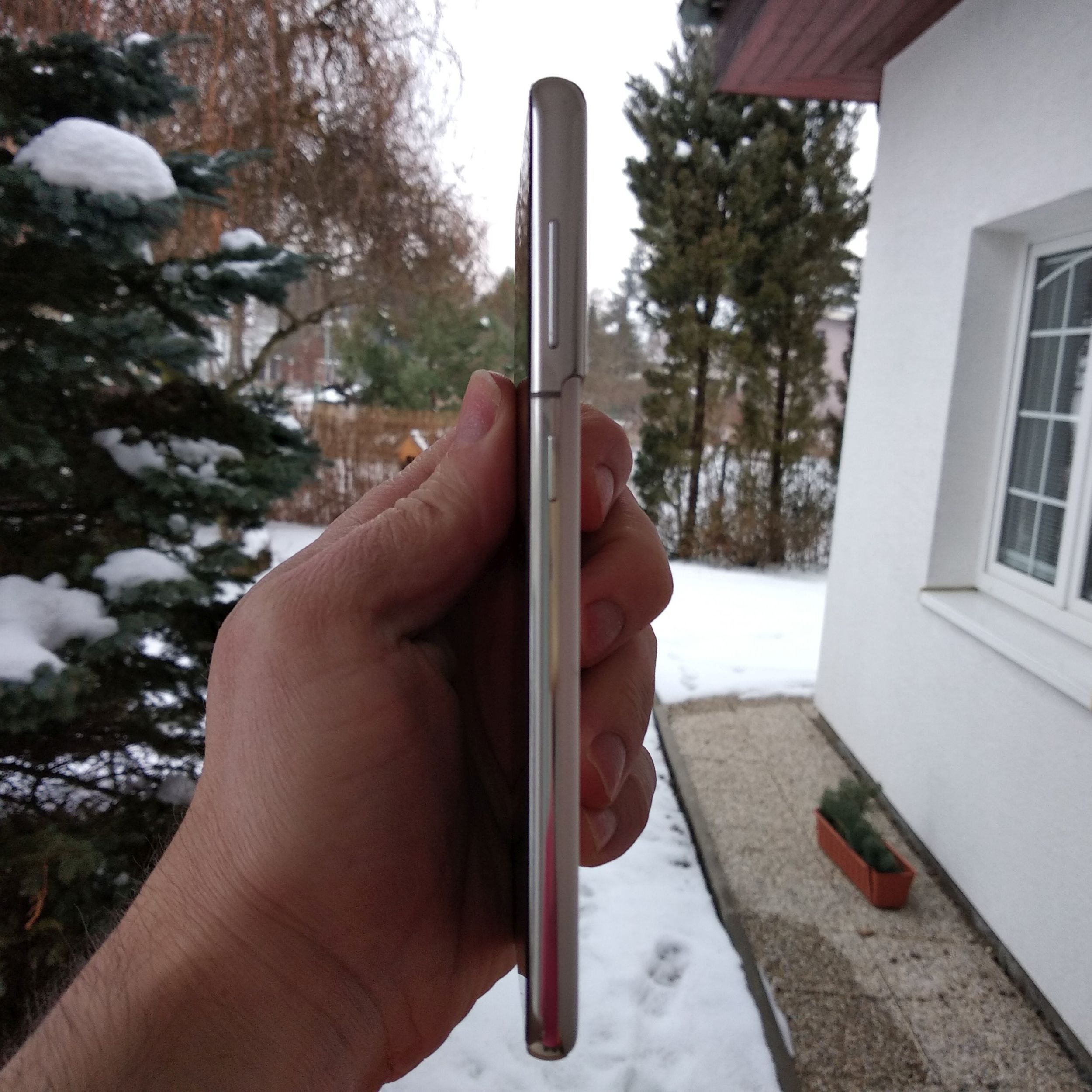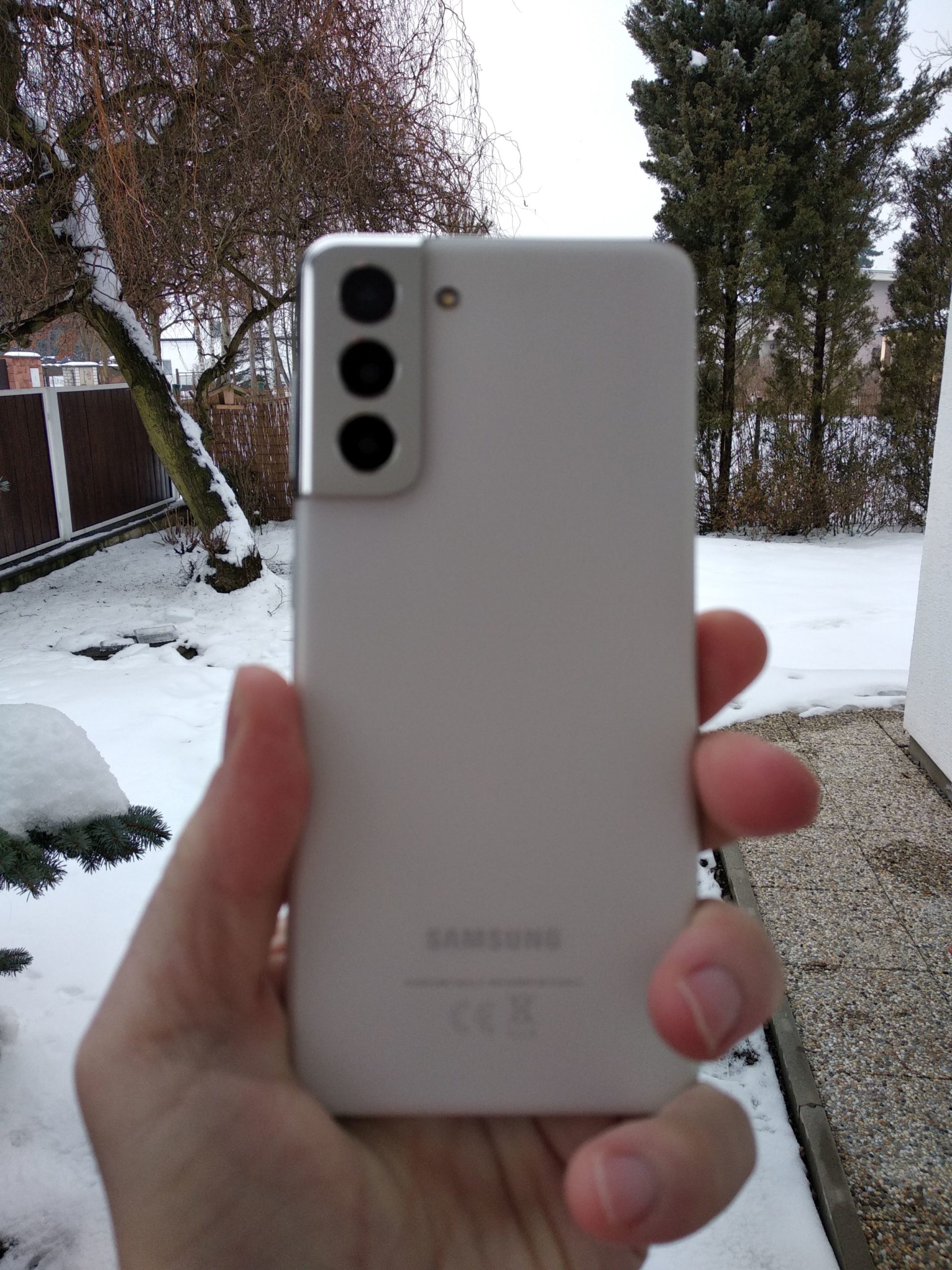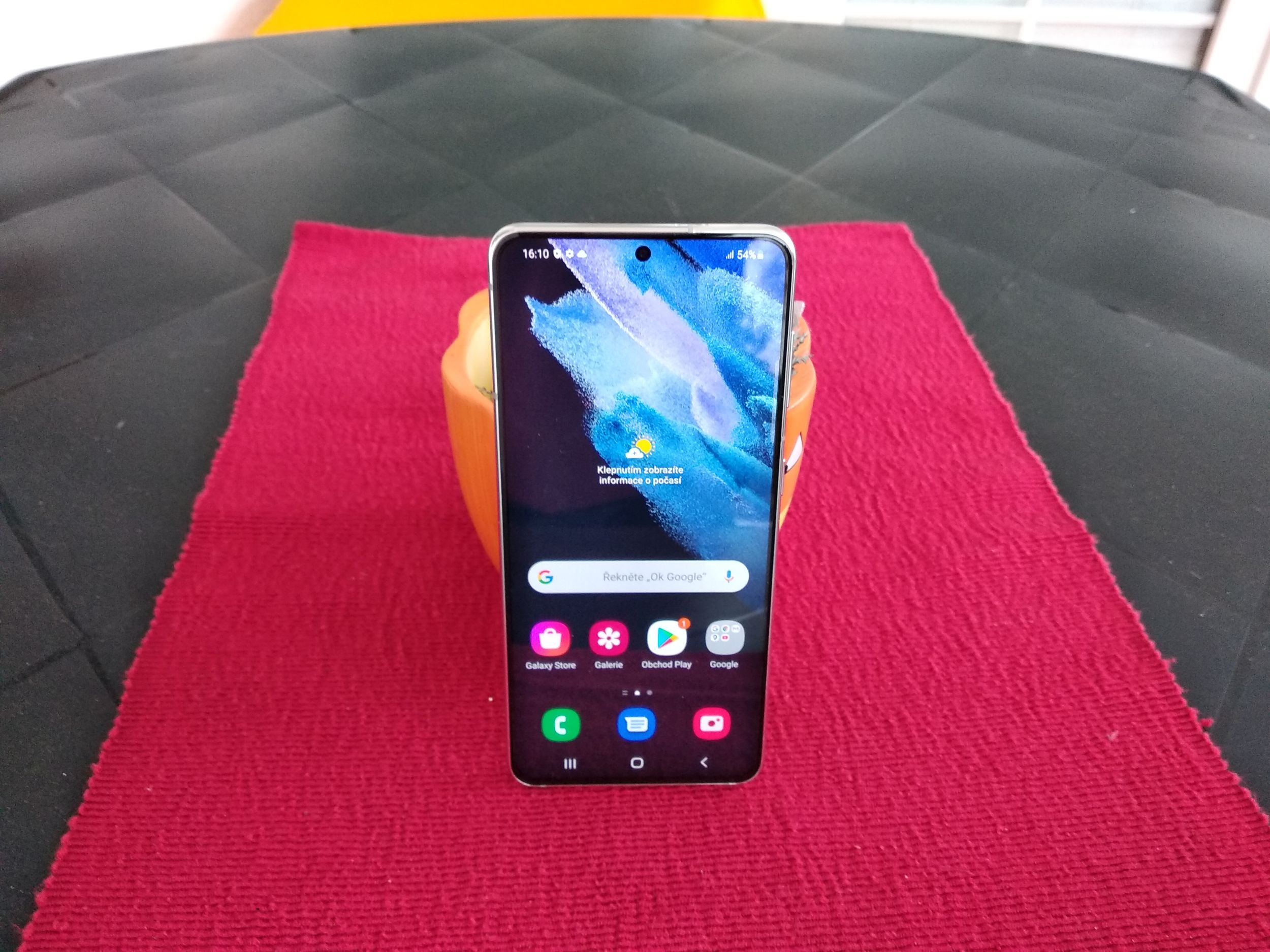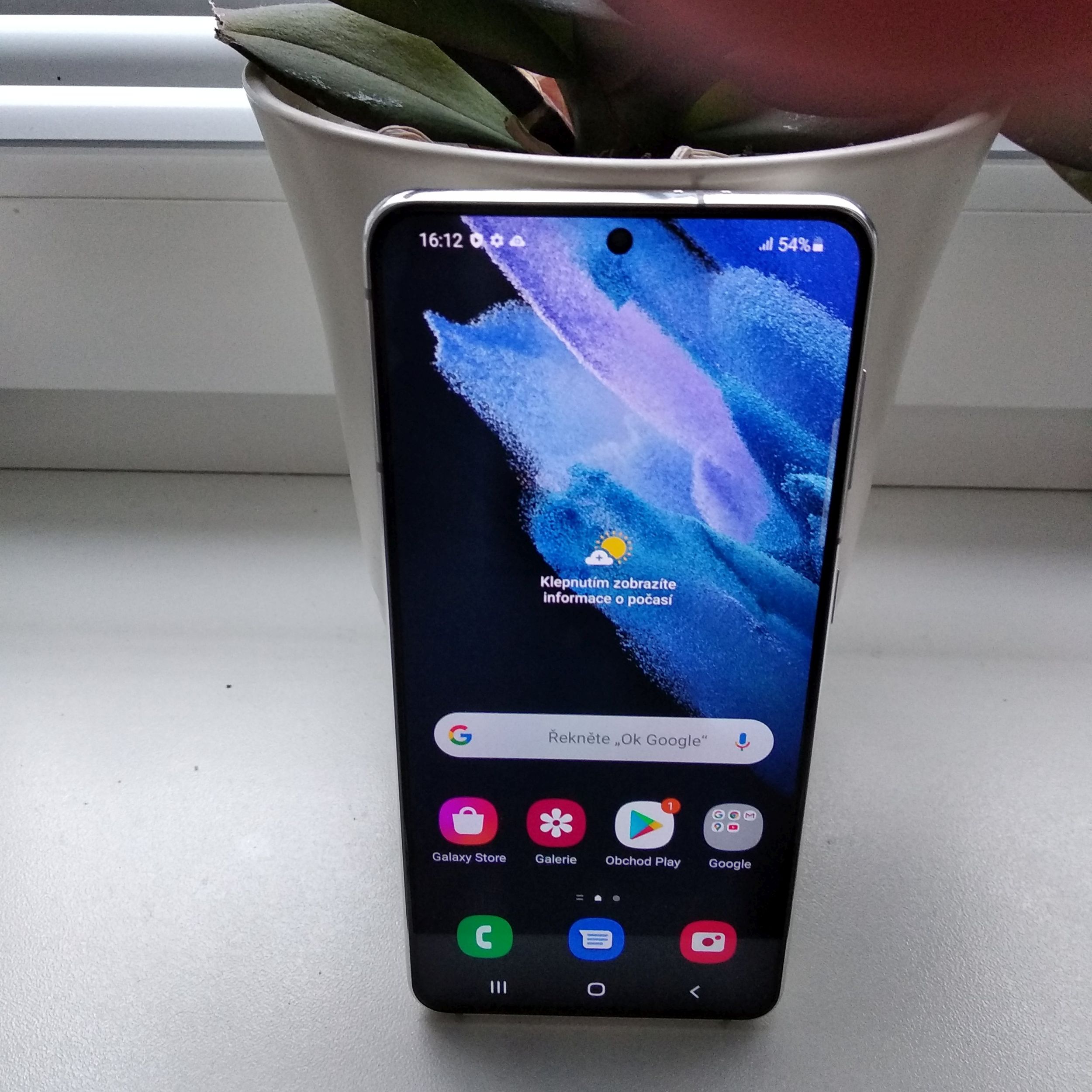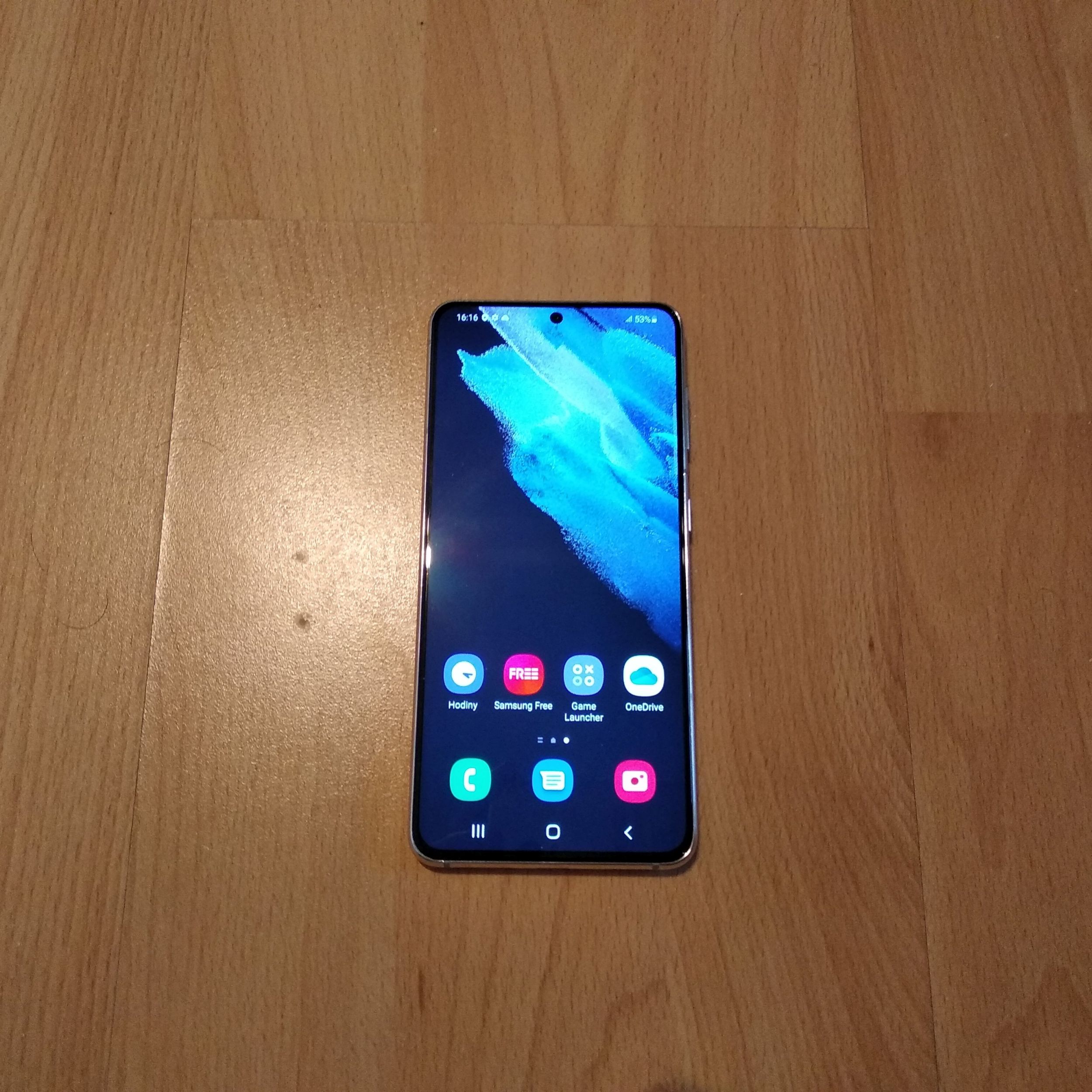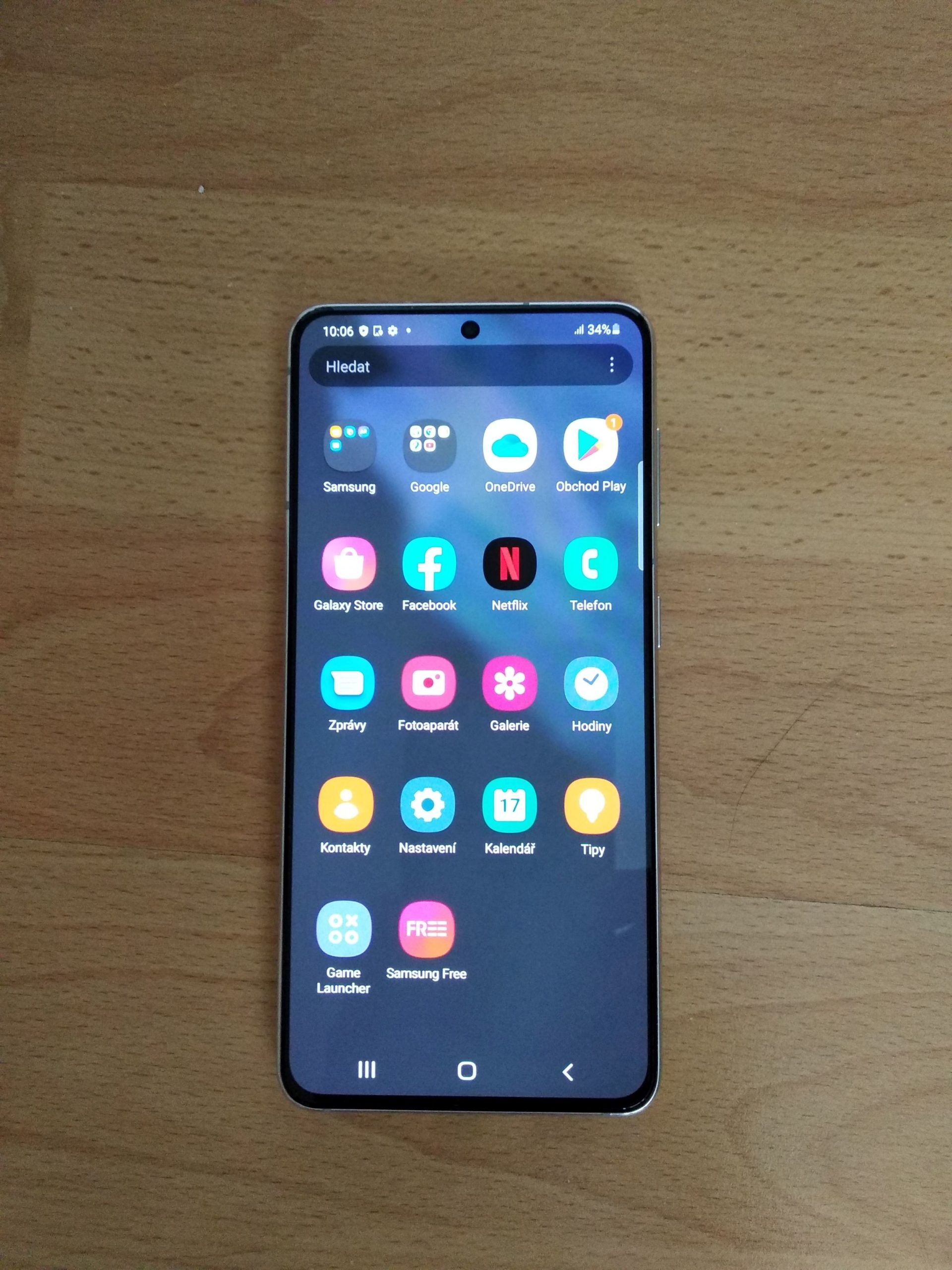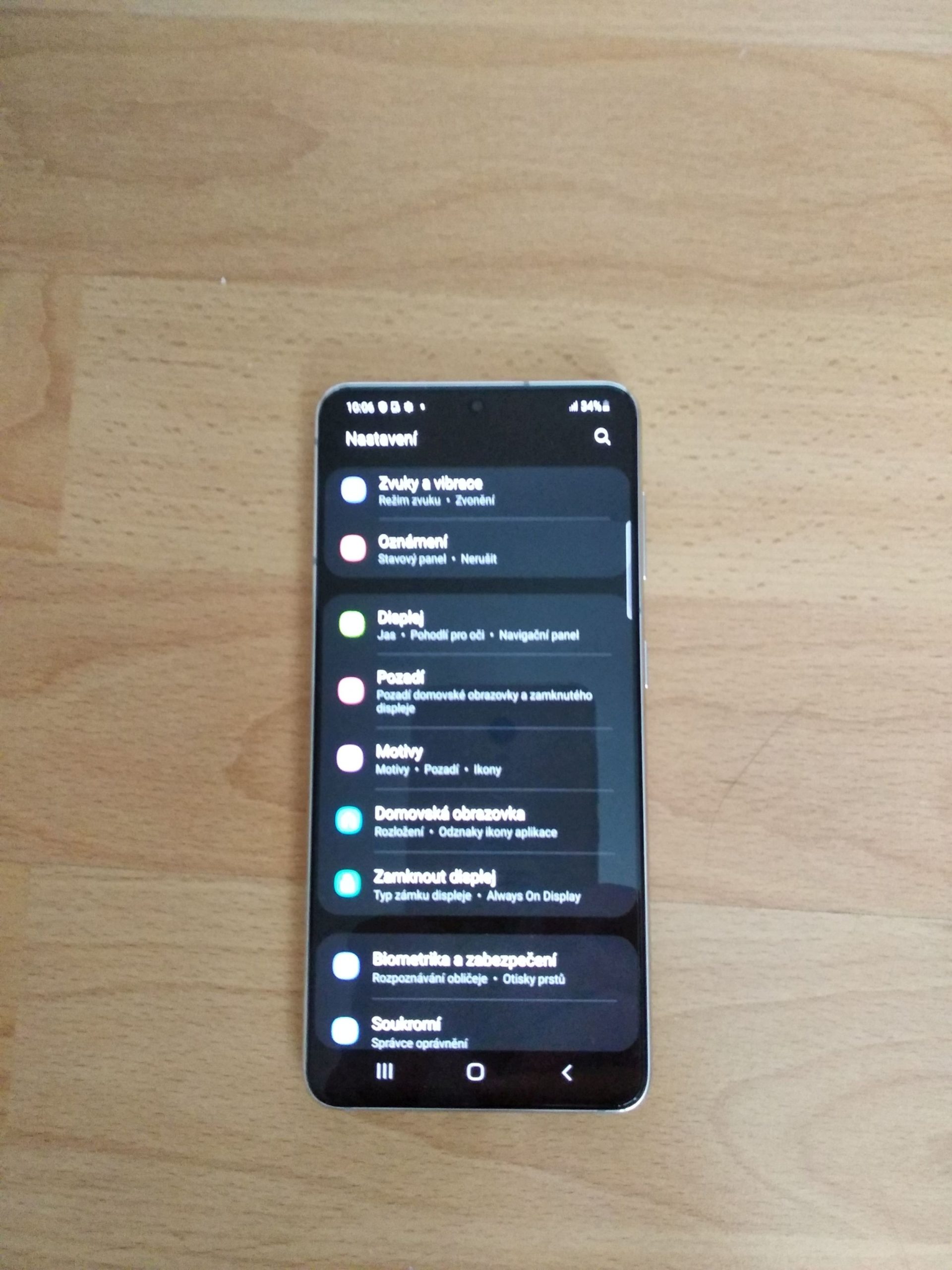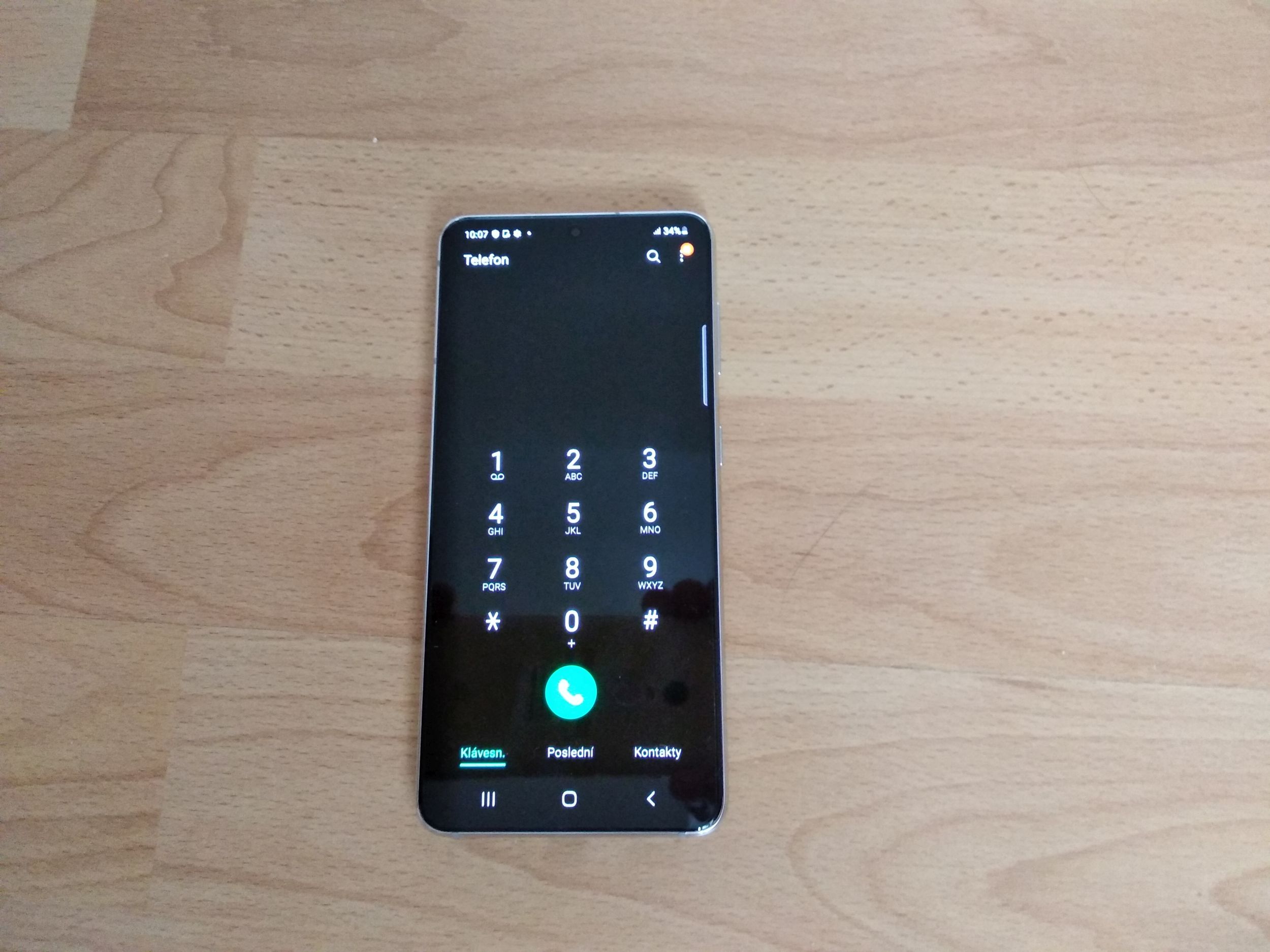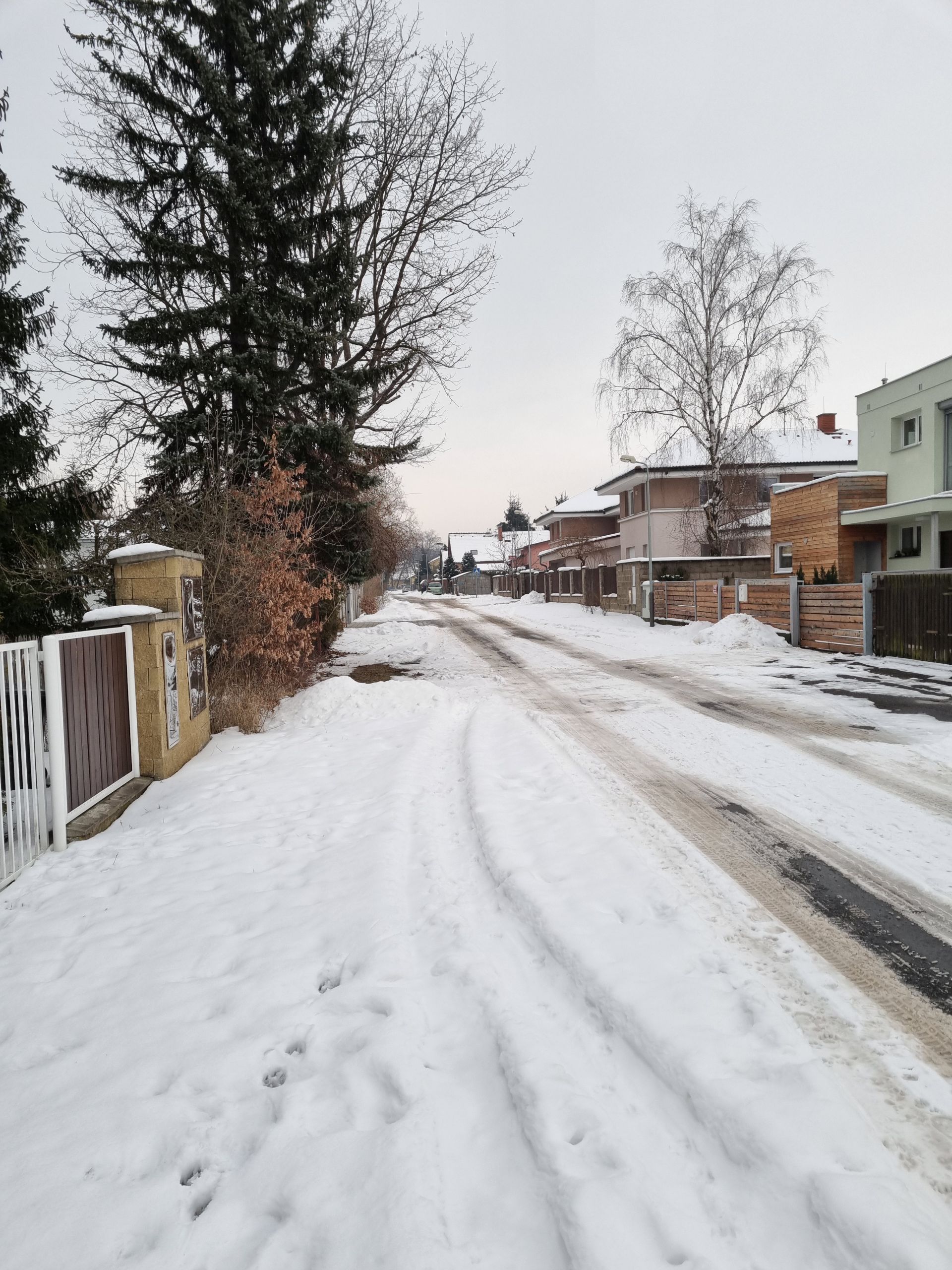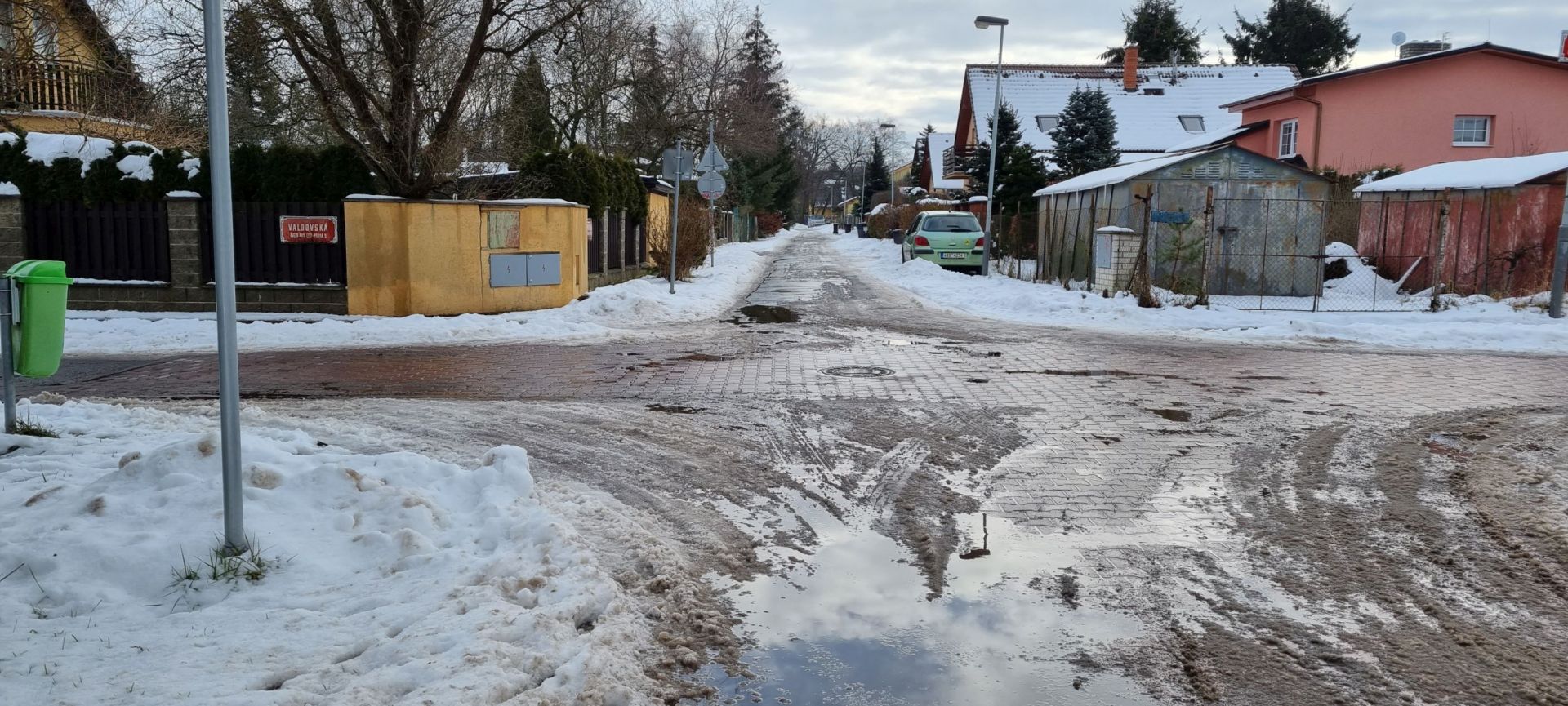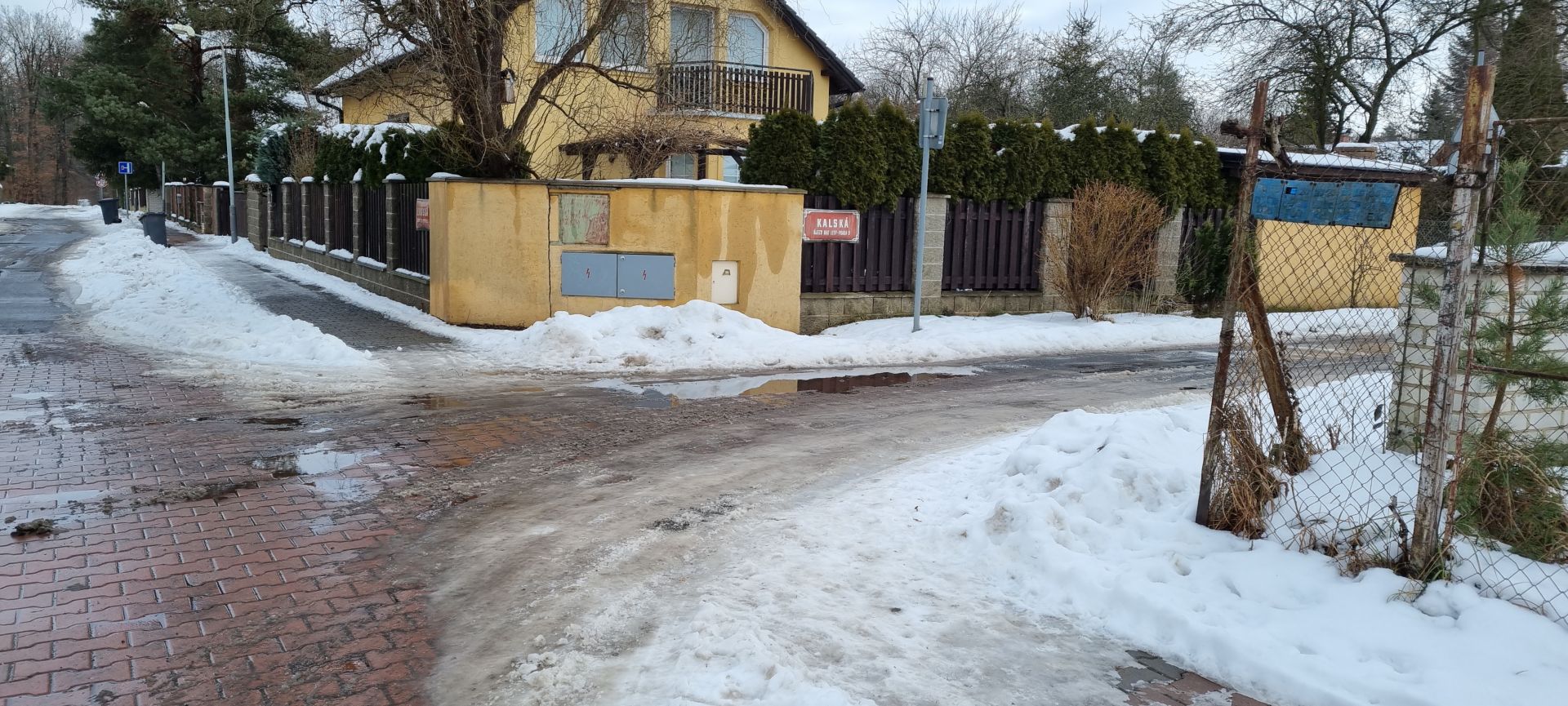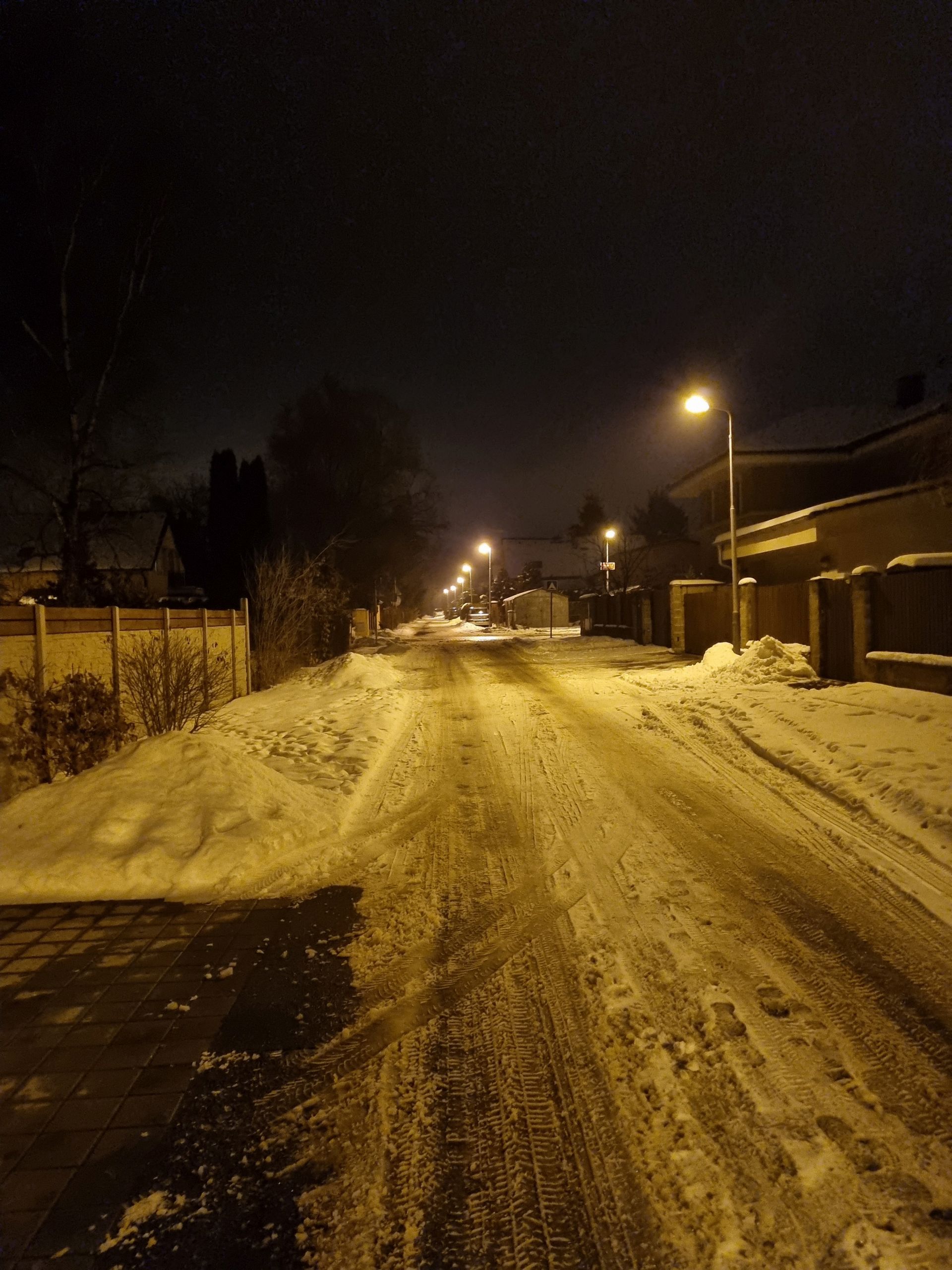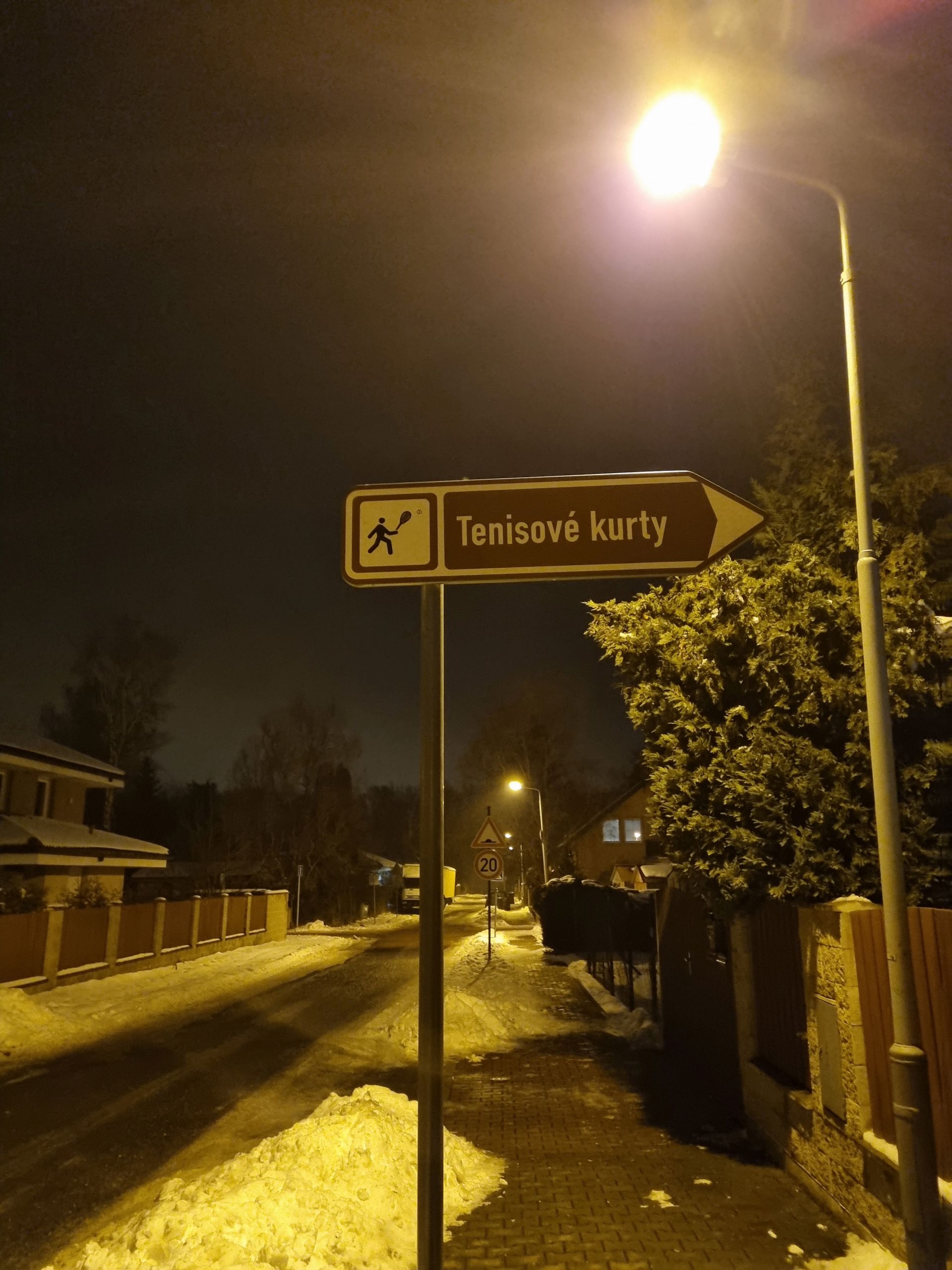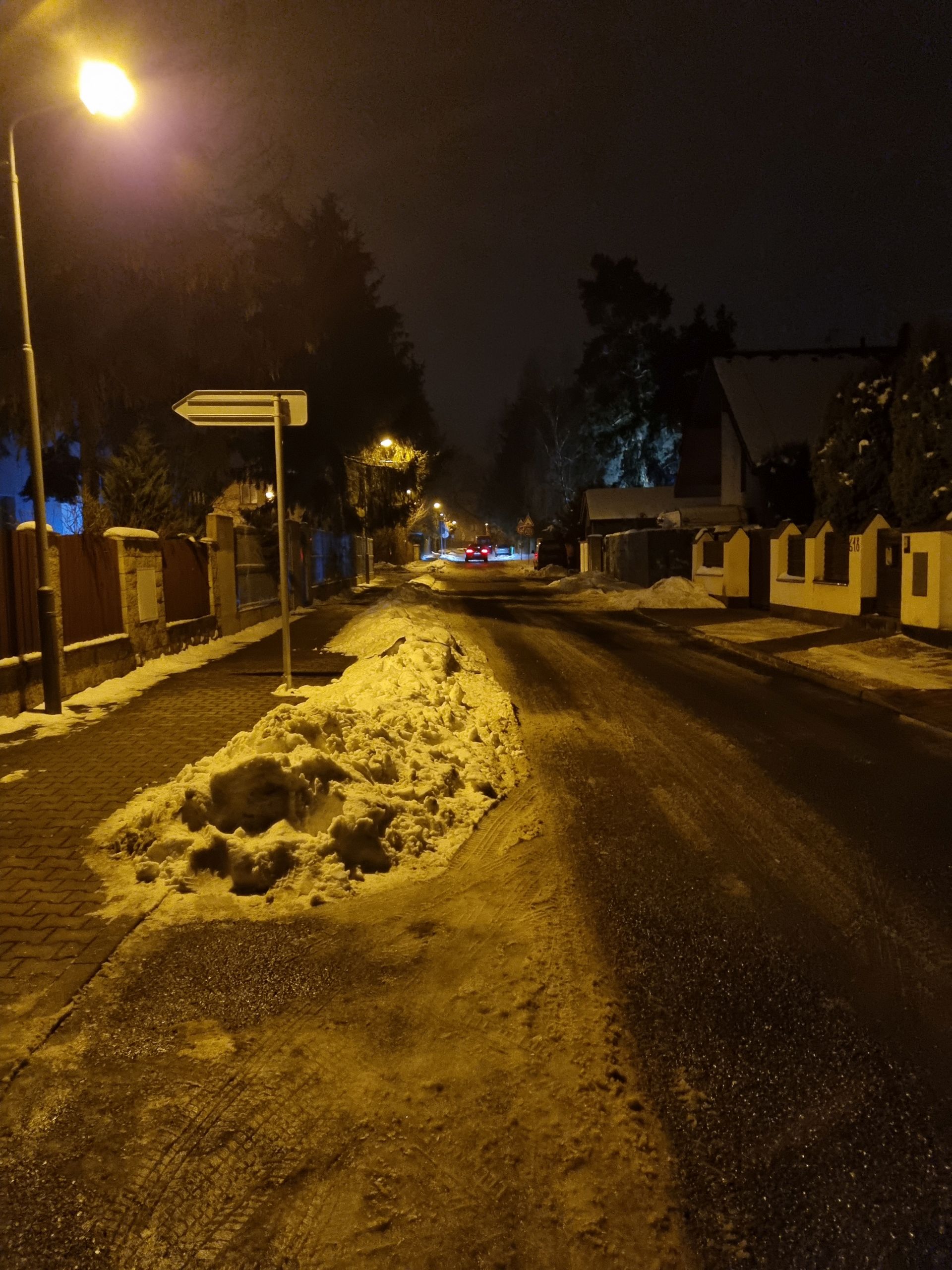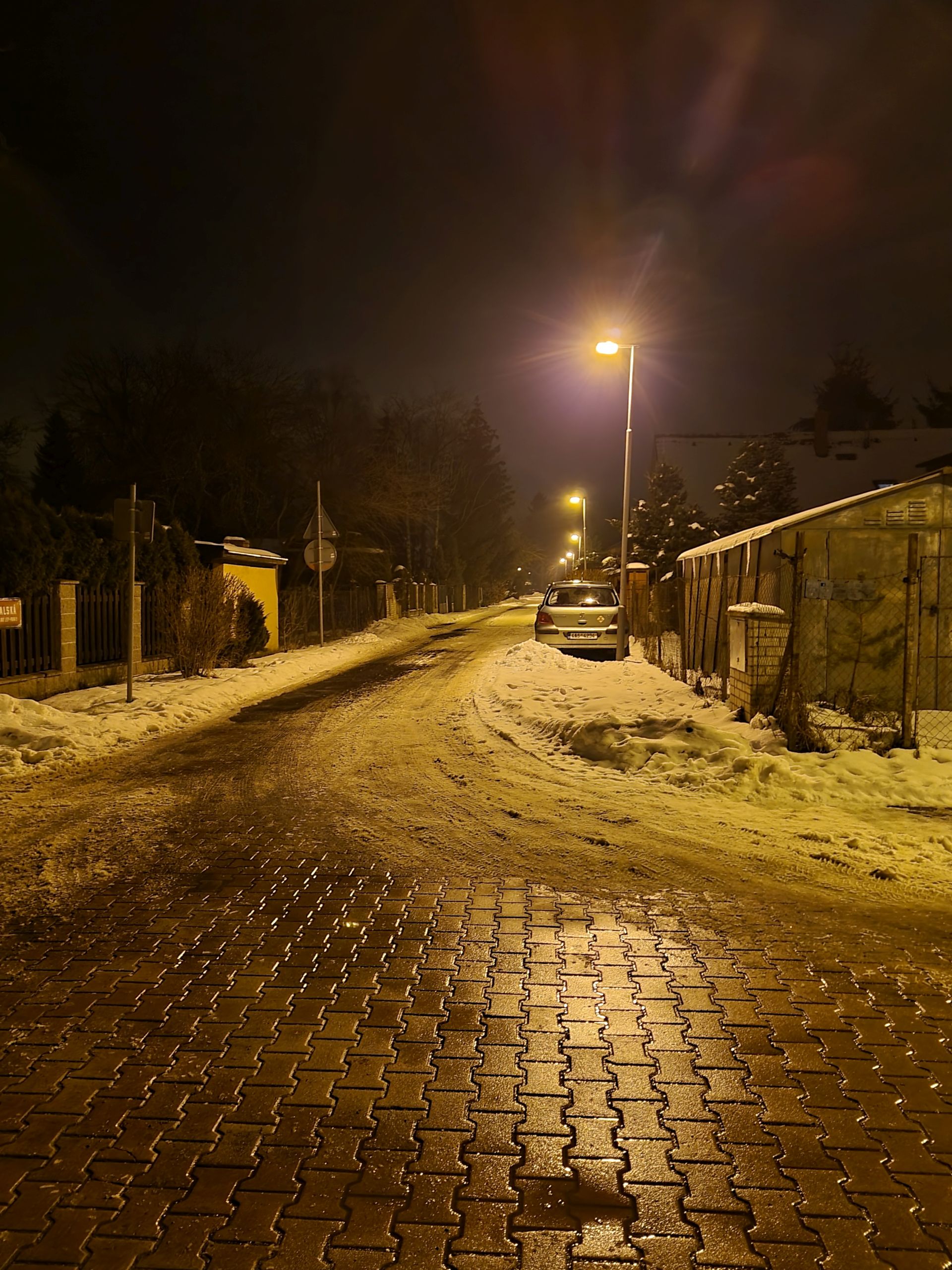Are you thinking these days that your "old" Samsung Galaxy You can exchange the S20 or S10 for a new flagship Galaxy S21? We can advise you on this, because we got our hands on one "piece" in white color for the review. How did it fare in our test and is it really worth replacing? You should learn that on the following lines.
Packing
The smartphone came to us in a compact black box, which was somewhat lighter than usual Samsung phone boxes. The reason is well known – Samsung did not pack a charger (or headphones) in the box this time. In his own words, the South Korean tech giant's move was driven by larger environmental concerns, but the real reason is likely to lie elsewhere. In this way, Samsung can save on costs and still earn extra by selling chargers separately (in our country, a charger with a power of 25 W, which is the maximum supported power for all models of this year's flagship series, is sold for 499 crowns). In the package, you will only find the phone itself, a data cable with a USB-C port on both ends, a user manual and a pin for removing the nano-SIM card slot.

Design
Galaxy The S21 looks very nice and stylish at first and second glance. This is mainly thanks to the unconventionally designed photo module, which easily protrudes from the body of the phone and is attached to its top and right side. Some people may not like this design, but we definitely do, because we think it looks futuristic and elegant at the same time. The front has also changed since last year, although not as much as the back - probably the biggest difference is the completely flat screen (only the Ultra model this year has a curved screen, and only very slightly) and a slightly larger hole for the selfie camera.
Somewhat surprisingly, the back of the smartphone is made of plastic, not glass like last time. However, the plastic is of good quality, nothing creaks or creaks anywhere, and everything fits tightly. In addition, this modification has the advantage that the phone does not slip from the hand as much and fingerprints do not stick to it as much. The frame is then made of aluminum. Let's also add that the dimensions of the phone are 151,7 x 71,2 x 7,9 mm and that it weighs 169 g.
Display
Displays have always been one of the strengths of Samsung's flagships and Galaxy The S21 is no different. Although the resolution has been reduced from QHD+ (1440 x 3200 px) to FHD+ (1080 x 2400 px) since last time, you can hardly tell in practice. The display is still very fine (specifically, its fineness is more than enough 421 PPI), everything is sharp and you can't see the pixels even after a closer inspection. The quality of the display, which has a relatively compact 6,2-inch diagonal, is simply great, the colors are saturated, the viewing angles are excellent and the brightness is high (specifically, it reaches up to 1300 nits), so that the display is perfectly readable in direct sunlight.
In the default "adaptive" setting, the screen switches between a 48-120Hz refresh rate as needed, making everything on it smoother, but at the cost of increased battery consumption. If higher consumption bothers you, you can switch the screen to standard mode, where it will have a constant frequency of 60 Hz. The biggest difference between a lower and a higher refresh rate is smoother animations and scrolling, faster touch response or smoother images in games. Once you get used to the higher frequencies, you won't want to go back to the lower ones, because the difference is truly palpable.
We will stay with the display for a while, because it is related to the fingerprint reader integrated into it. Compared to last year's flagship series, it is significantly more accurate, which is due to its larger size (compared to the previous sensor, it occupies more than three quarters of the area, namely 8x8 mm), and it is also faster. The phone can also be unlocked using your face, which is also very fast. However, this is only a 2D scan, which is less secure than the 3D scan used by, for example, some Huawei smartphones or iPhones.
Performance
In the guts Galaxy The S21 is powered by Samsung's new Exynos 2100 flagship chipset (Snapdragon 888 is only for the US and Chinese markets), which complements 8 GB of RAM. This combination perfectly handles both common activities, i.e. moving between screens or launching applications, as well as more demanding tasks such as playing games. It also has enough performance for more demanding titles, such as Call of Duty Mobile or the racing hits Asphalt 9 or GRID Autosport.
So if you were worried that the new Exynos 2100 would be slower than the new Snapdragon in practice, you can put your fears to rest. "On paper", the Snapdragon 888 is more powerful (and also more energy efficient), but not so much that it is noticeable in real applications. Although some sites when testing the performance and effectiveness of the exynos variant Galaxy The S21 indicated that the chipset could overheat in real-world applications and "throttle" performance as a result, we didn't experience anything like that. (It's true that the phone did get a little warm during prolonged gaming, but that's not unusual even for flagships.)
Some users Galaxy However, the S21 (and other models in the series) have been complaining about overheating in recent days on various forums. However, it should apply to both chipset variants. Some users report increased heating, for example, when watching videos on YouTube, others when using the camera, and others during video calls, i.e. during normal activities. One can only hope that it is not a serious error and that Samsung will fix it as soon as possible with a software update. Anyway, we avoided this problem.
In this chapter, let's add that the phone has 128 GB or 256 GB of internal memory (the tested version had 128 GB). As you know from our news, all models of the new series lack a microSD card slot, so you'll have to make do with what you have. 128GB of storage does not seem small at first glance, but if you are, for example, a movie lover or a passionate photographer, the internal memory can fill up quite quickly. (Let's also not forget that a piece of space will "peel off" Android, so only a little over 100GB is actually available.)
Camera
Galaxy The S21 is a smartphone that not only has a top-notch display and performance, but also a top-notch camera. Let's start with the parameters first - the main sensor has a resolution of 12 MPx and a wide-angle lens with an aperture of f/1.8, the second has a resolution of 64 MPx and a telephoto lens with an aperture of f/2.0, supporting 1,1x optical, 3x hybrid and 30x digital magnification, and the last one has 12 MPx resolution and is equipped with an ultra-wide-angle lens with an aperture of f/2.2 and a 120° angle of view. The first and second cameras have optical image stabilization and phase detection autofocus (PDAF). The front camera has a resolution of 10 MPx and a wide-angle telephoto lens with an aperture of f/2.2 and can record videos in up to 4K resolution at 60 FPS. If you are familiar with these specifications, you are not mistaken, because last year's model already offered the exact same camera configuration Galaxy S20.
What to say about the quality of the photos? In a word, it is excellent. The images are perfectly sharp and full of details, the colors are faithfully presented and the dynamic range and optical image stabilization work perfectly. Even at night, the photos are sufficiently representative, which is also helped by the improved night mode. Of course, the camera application does not lack a Pro mode in which you can manually adjust, for example, sensitivity, exposure length or aperture, or preset modes such as Portrait, Slow Motion, Super Slow, Panorama or the improved Single Take mode from last year. According to Samsung, this allows "capturing moments in a completely new way". In practice, it looks like when you press the camera shutter, the phone starts taking pictures and recording videos for up to 15 seconds, after which the artificial intelligence "takes them for a show" and applies various color or light filters, formats, etc. to them.
As for videos, the camera can record them in 8K/24 FPS, 4K/30/60 FPS, FHD/30/60/240 FPS and HD/960 FPS modes. You don't have to worry about the quality, just like with photos, but the image stabilization deserves a special mention, it works really well here. When shooting at night, the image will not avoid a certain amount of noise (as with photos), but it is certainly nothing that should spoil your enjoyment of recording. Of course, the camera captures videos in stereo sound. In our opinion, shooting in 4K resolution at 60 FPS is the best option, recording in 8K resolution is more of a marketing lure - 24 frames per second is far from smooth, and it is also important to remember that each minute of 8K video takes up around 600 MB on storage ( for 4K video at 60 FPS it is roughly 400 MB).
Also worth noting is the Director's View mode, where all cameras (including the front one) are involved in video recording, while the user can view the filmed scenes from each of them through a preview image (and change the scene by clicking on it). This feature will come in handy especially for vloggers.
Prostředí
All models of the series Galaxy The S21 software runs on Androidu 11 and One UI 3.1, i.e. the latest version of Samsung's user interface. The environment is clear, looks good from an aesthetic point of view, but above all it offers a wide range of customization options. This applies, for example, to widgets on the lock screen, where you can change their size or transparency, or icons, where you can change the shape and color. We were also pleased with the improved notification center, which is now clearer, but still far from ideal. The interface can be switched - as with the previous version - to dark mode, which we preferred over the default light, because in our opinion it not only looks better, but also saves the eyes (a new function called Eye Comfort Shield is also used to save the eyes, which according to the time of day automatically regulates the intensity of harmful blue light emitted by the display).
Battery life
Now we come to what many of you will be most interested in and that is battery life. During normal operation, which in our case included Wi-Fi turned on during the day, browsing the Internet, a photo here and there, a few "texts" sent, a few calls and a small "dose" of gaming, the battery indicator showed 24% at the end of the day. In other words, the phone should last about a day and a quarter on a single charge during standard use. We can imagine that with a lower load, turning off the adaptive brightness, switching the display to a constant 60 Hz and turning on all possible saving functions, we could get to two days. Taken around and around, the battery Galaxy The S21, even if it has the same value as its predecessor, will last longer thanks to the improved power efficiency of the Exynos 2100 chip (compared to the Exynos 990), as Samsung promised (Galaxy The S20 lasts about a day with normal use).
Unfortunately, we didn't have a charger available to measure how long it takes to fully charge the phone. So we could only test charging with a data cable. It took over two hours to charge to 100% from about 20%, so we definitely recommend getting the aforementioned charger. With it, charging – from zero to 100% – should take just over an hour.
Conclusion: is it worth buying?
So let's sum it all up – Galaxy The S21 offers very good workmanship (despite the presence of plastic), a nice design, an excellent display, great performance, excellent photo and video quality, a very reliable and fast fingerprint reader, a wide range of customization options and more than solid battery life. On the other hand, the phone lacks a slot for a microSD card, it only supports a maximum of 25W fast charging (this is at a time when the competition usually offers 65W and higher charging, in short, not enough), the display has a lower resolution than in previous years (although only experts will really recognize this ) and of course we must not forget the absence of a charger and headphones in the package.
Anyway, the question of the day is whether Samsung's new standard flagship is worth buying. Here, it will probably depend on whether you are the owner of last year's Galaxy S20 or last year's S10. In this case, in our opinion, they are not improvements Galaxy S21 big enough to be worth upgrading. However, if you own Galaxy S9 or an older representative of the "esque" series, it is already worth considering an upgrade. Here, the differences are quite significant, mainly in the area of hardware, display or camera.
Either way, Galaxy The S21 is an excellent flagship smartphone that really offers a lot for its price. His flags do have cracks, but it's nothing to worry about. Finally, let's remind you that the phone can be purchased here in the version with 128 GB of internal memory for less than CZK 20 (Samsung offers it on its website for CZK 22). However, we can't get rid of the nagging feeling that the "budget flagship" launched a few months ago with a fantastic price/performance ratio isn't a better choice after all Galaxy S20 FE 5G…
